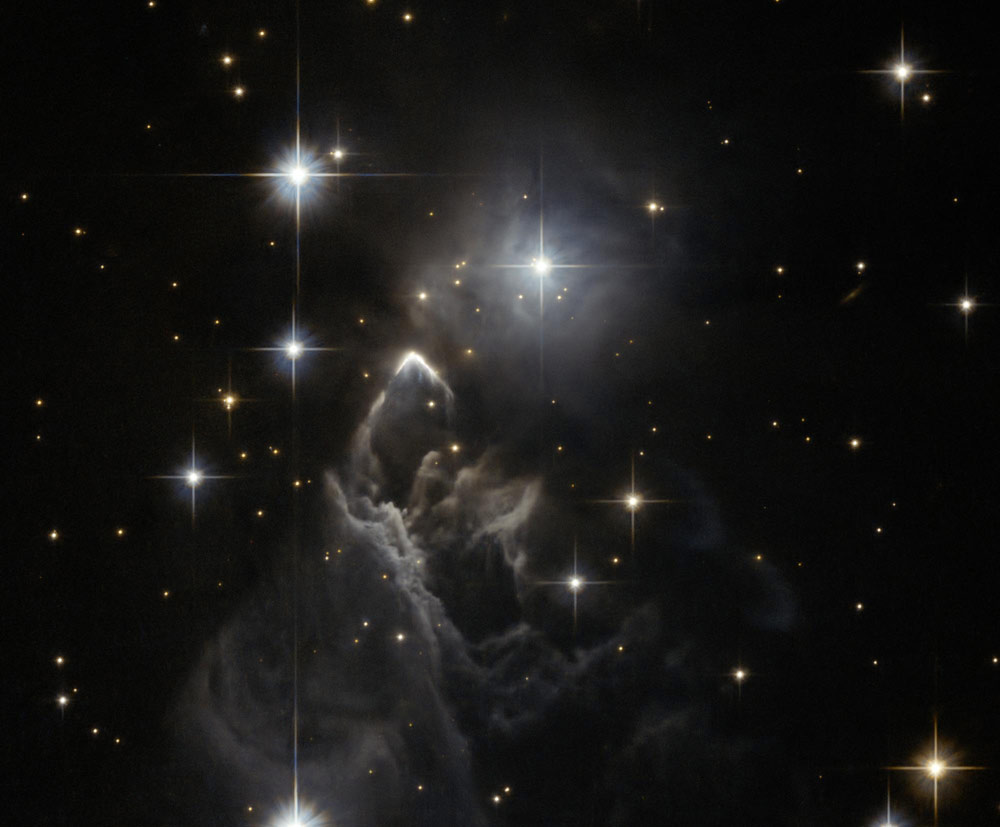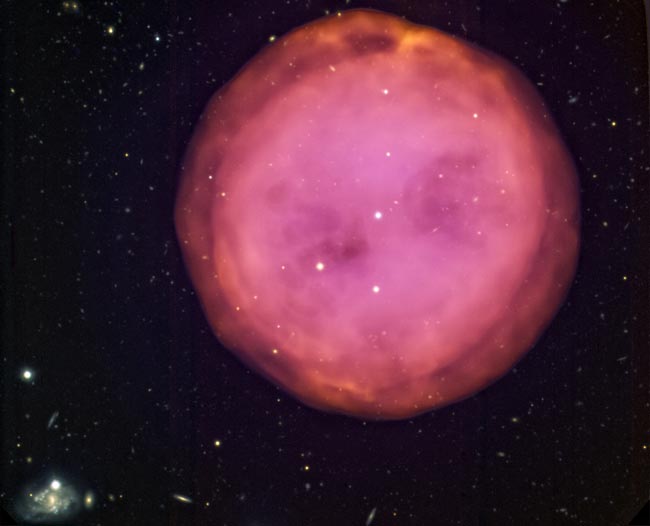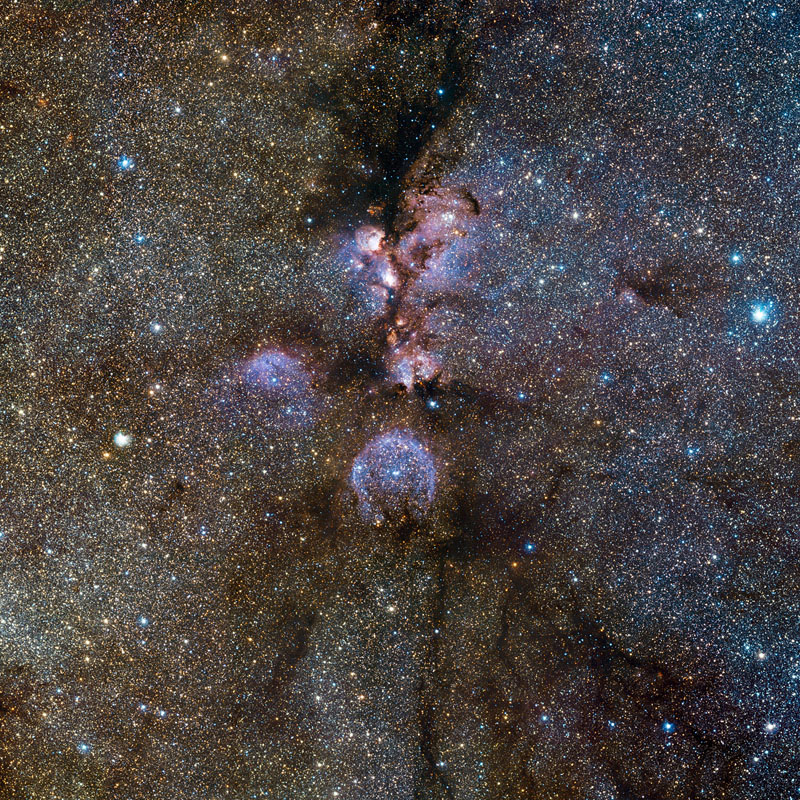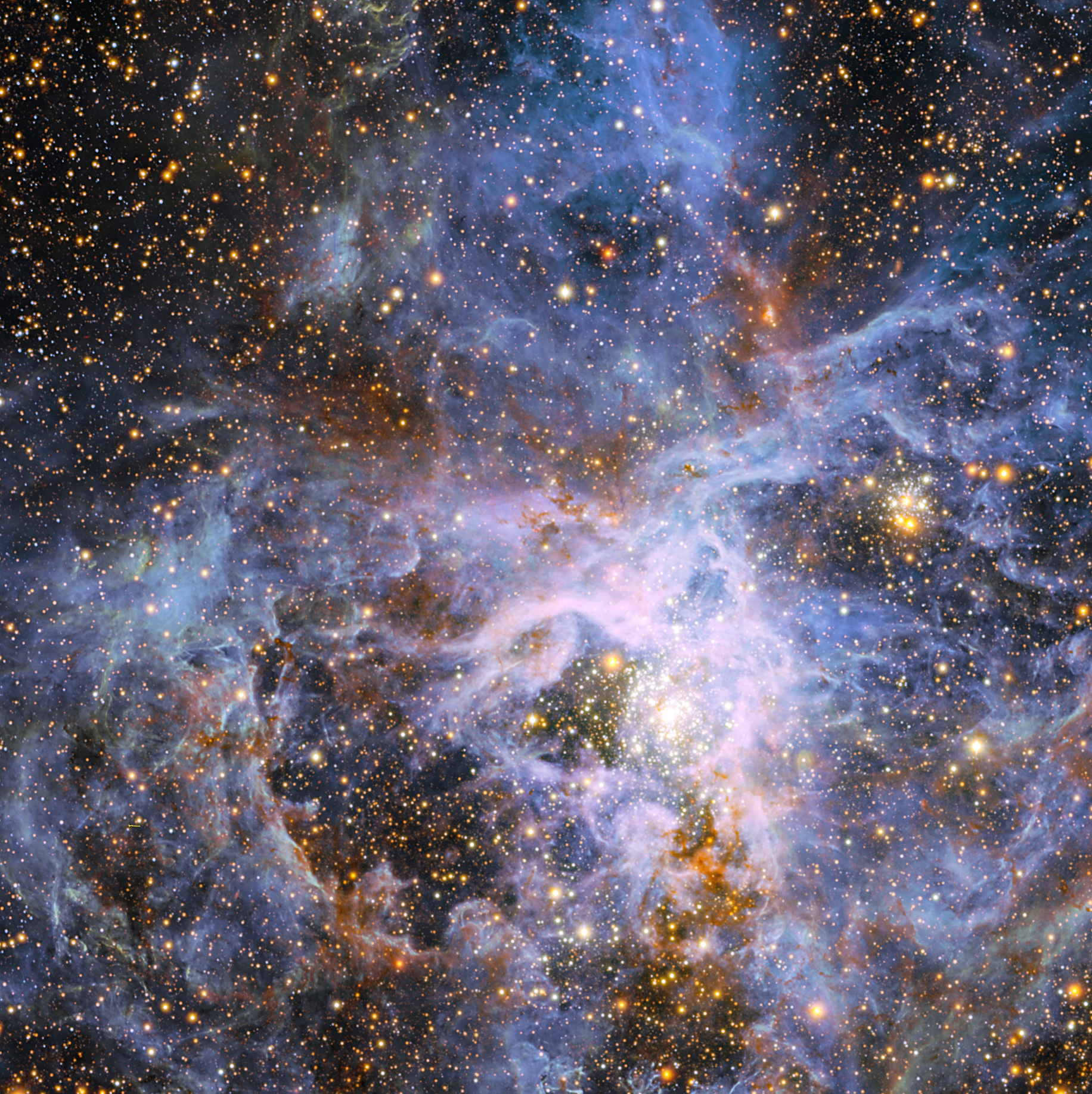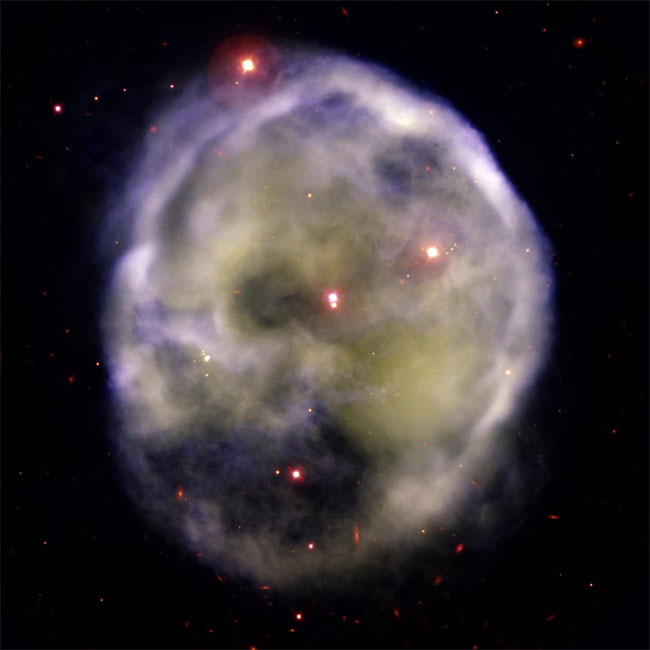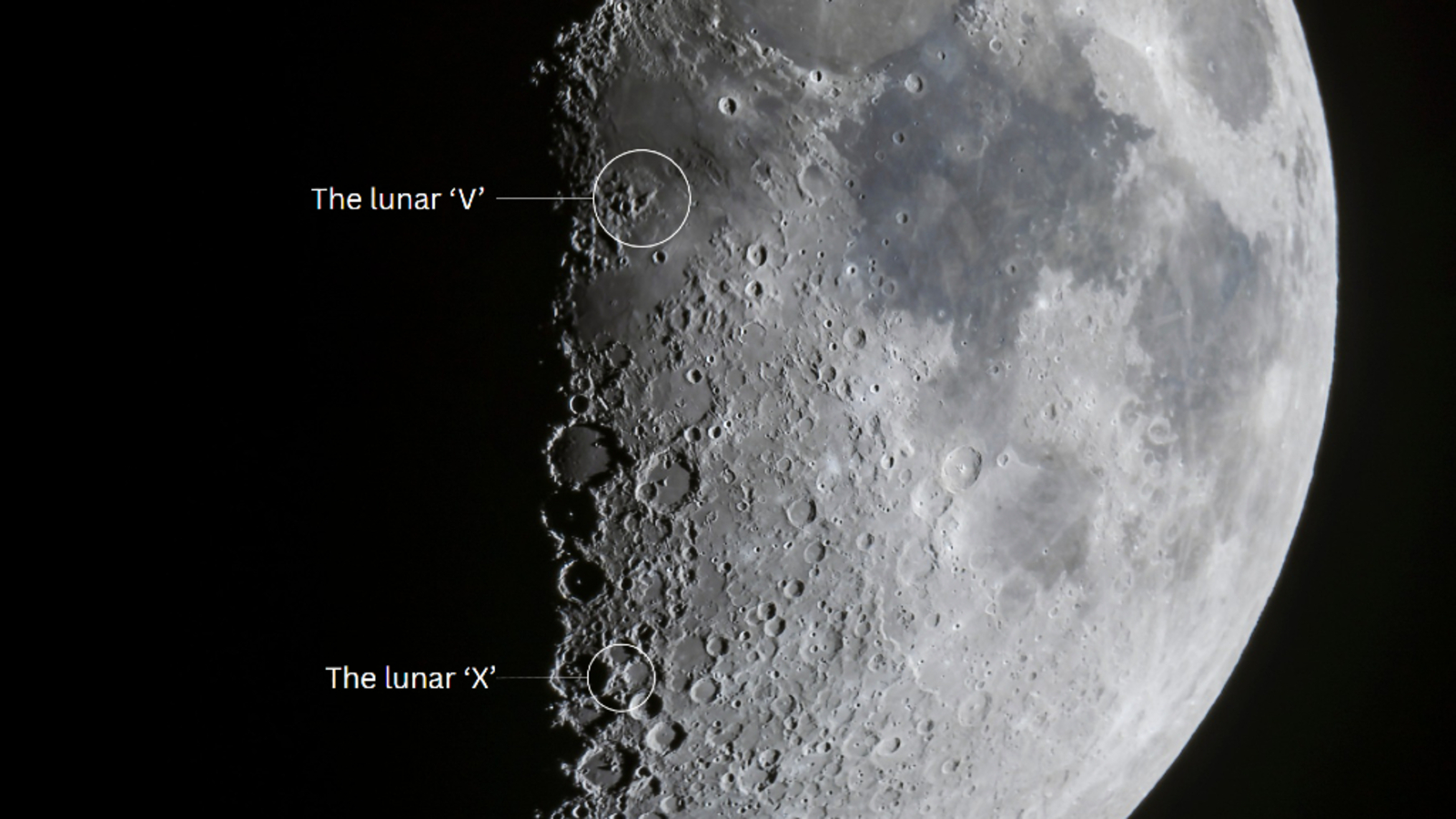Haunting Photos: The Spookiest Nebulas in Space
Ghost-Like Nebula Says 'Boo!'
The ghost-like nebula, IRAS 05437+2502, includes a small star-forming region filled with dark dust that was first noted in images taken by the IRAS satellite in infrared light in 1983. This recently released image from the Hubble Space Telescope shows many new details, but has not uncovered a clear cause of the bright sharp arc.
Mysterious Owl Nebula
Gemini North image of the planetary nebula M97, also known as the Owl Nebula, imaged by the Gemini Multi-Object Spectrograph (GMOS) as part of a Canadian contest for high school students. The approximately 6,000 year-old nebula is located about 2,600 light-years away, and has a diameter of about three light-years across. It is located in the constellation of Ursa Major (which contains the Big Dipper).
Cat's Paw Nebula: Could It Be a Black Cat?
Infrared view of the Cat's Paw Nebula (NGC 6334) taken by VISTA. NGC 6334 is a vast region of star formation about 5500 light-years from Earth in the constellation of Scorpius. The whole gas cloud is about 50 light-years across. NGC 6334 is one of the most active nurseries of young massive stars in our galaxy, some nearly ten times the mass of our Sun and most born in the last few million years. The images were taken through Y, J and Ks filters (shown as blue, green and red respectively) and the exposure time was five minutes per filter. The field of view is about one degree across. Full Story.
Space Tarantula!
This view shows part of the very active star-forming region around the Tarantula Nebula in the Large Magellanic Cloud, a small neighbor of the Milky Way. At the exact center lies the brilliant but isolated star VFTS 682 and to its lower right the very rich star cluster R 136.
Creepy Skull: Aieeeee!
A Gemini South image of the planetary nebula NGC 246, or "Skull Nebula."
Breaking space news, the latest updates on rocket launches, skywatching events and more!
Join our Space Forums to keep talking space on the latest missions, night sky and more! And if you have a news tip, correction or comment, let us know at: community@space.com.

Space.com is the premier source of space exploration, innovation and astronomy news, chronicling (and celebrating) humanity's ongoing expansion across the final frontier. Originally founded in 1999, Space.com is, and always has been, the passion of writers and editors who are space fans and also trained journalists. Our current news team consists of Editor-in-Chief Tariq Malik; Editor Hanneke Weitering, Senior Space Writer Mike Wall; Senior Writer Meghan Bartels; Senior Writer Chelsea Gohd, Senior Writer Tereza Pultarova and Staff Writer Alexander Cox, focusing on e-commerce. Senior Producer Steve Spaleta oversees our space videos, with Diana Whitcroft as our Social Media Editor.
